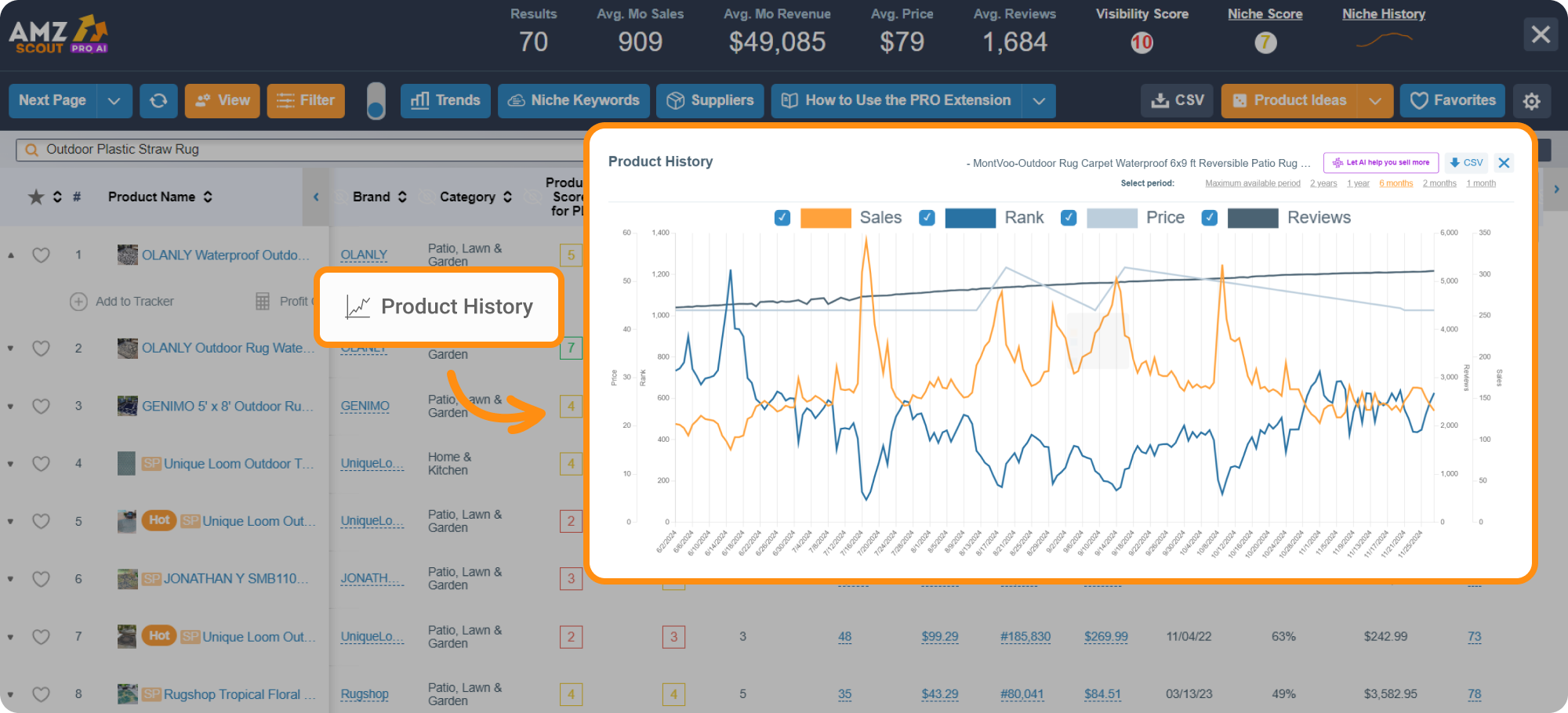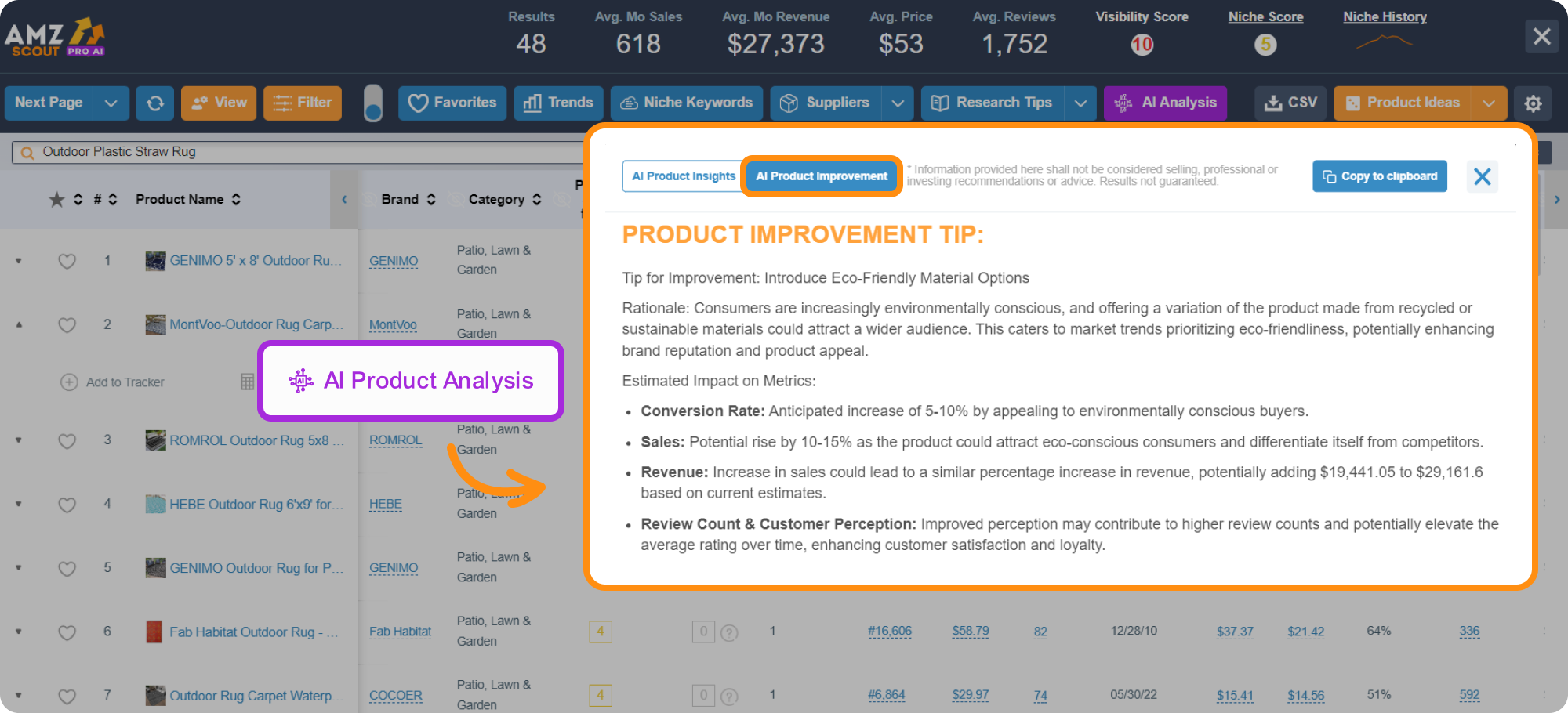
How to Analyze Amazon Reviews: Tools, Tips, and Benefits
In the hyper-competitive world of e-commerce, understanding your customers is essential. Amazon reviews are a treasure trove of insights, offering real-world feedback from buyers who have interacted with your products. But the power of review analysis goes beyond just improving your product and getting a higher rating; it’s a way to understand market trends and customer preferences.
In this article, we’ll break down the process of analyzing Amazon reviews step by step, explore tools that can make this task easier, and explain how to apply these insights to growing your business.
Table of contents
How to Analyze Amazon Reviews, Step-by-Step
Analyzing Amazon reviews can seem overwhelming at first, but breaking the process into simple, actionable steps can make it much more manageable. Here’s a straightforward approach to get started:
Step 1: Decide What to Analyze
The first thing you need to do is choose which products to focus on. You can start by analyzing your own products (perhaps your lower-performing ones) to find ways to improve, or your best sellers to understand what’s driving their success. However, to get a broader perspective, it's also important to analyze your competitors' products as well. Here's how to find them:
1. Search for similar products. Go to Amazon and search for products that are similar to yours. Enter your product name or related keywords.
2. Sort the results. Filter the results by top-selling or highest-rated products. You can also apply additional filters (like price, color, etc.) in the left sidebar to narrow down the search.
3. Create a product list. Aim to compile a list of 10-15 relevant competitors whose products are comparable to yours.
Once you have your list of products, it’s time to dig into their reviews for helpful insights.
Analyzing Amazon reviews might seem like an overwhelming process at first, but breaking it down into clear, actionable steps simplifies the task. By following this structured approach, you can discover valuable insights that help you enhance your product and sales strategy. From gathering reviews to leveraging advanced tools, this section will guide you through every stage of the process.
Step 2: Analyze Reviews
Scrolling through hundreds or even thousands of reviews can be a time-consuming task. Additionally, you need to be able to differentiate between subjective opinions and actual patterns, while also carefully analyzing whether the feedback is positive, negative, or neutral. Sometimes, customers may even use ironic or ambiguous language, which can make it tricky to interpret the reviews accurately.
To make this process faster and more efficient, consider using the AMZScout AI Review Analyzer. It provides instant insights in just a few seconds. Here's how to use it:
1. Go to the AI Review Analyzer page. Enter your email address to start a free trial (you’ll get one free product check).
2. Enter the ASIN. Click “Analyze Product by ASIN”, input the product’s ASIN, and hit “Get Review Analysis”.
3. Get the results. The tool will generate detailed statistics, graphs, and text-based insights based on customer reviews.
With these insights, you'll be able to quickly identify both strengths and weaknesses, allowing you to better understand what customers love and dislike about the product.
Step 3: Understand the Results
Once you have the analysis results, review the insights from multiple products and categorize the features as follows:
Positive features: Identify what customers consistently love about the product. This may include qualities like ease of use, durability, design, or unique functionalities that draw positive attention.
Negative feedback: Look for recurring complaints or issues raised by customers. These insights can help you pinpoint areas where your product may need improvements or adjustments to meet customer expectations more effectively.
Neutral feedback: Neutral reviews often reflect indifference towards certain features, suggesting that the product might be adequate but not extraordinary. These comments can help you uncover areas for improvement, such as upgrading your materials or adding small enhancements to make your product stand out.
By classifying customer feedback this way, you can clearly identify what’s working, what’s not, and where there’s room for refinement.
Using Special Tools to Gather Deeper Insights
Analyzing Amazon reviews is useful, but it’s also important to explore other aspects that influence successful sales. Tools like the AMZScout PRO AI Extension offer deeper insights and a broader perspective, helping you stay ahead of competitors. Combining human intuition with AI capabilities ensures the most thorough analysis. Here’s how to use this tool:
Install the AMZScout PRO AI Extension. Begin by downloading and installing the AMZScout PRO AI Extension. This tool offers a completely free trial with no credit card information required. Once you install the extension, you’ll find the icon next to your browser’s address bar, indicating that it’s ready for use.
Search for your product on Amazon. Navigate to Amazon and enter any keywords related to the product you’re exploring, or you can just type in the ASIN of your product.
Activate the AMZScout PRO AI Extension. Click on the extension’s round icon to activate it. This will bring up a dashboard that displays essential metrics that are tied to your search results, giving you a detailed overview at a glance.
Check the Product History. There, you’ll find some essential information like sales and reviews history, which enables you to compare how the number of reviews has changed in relation to sales.
Assess SWOT Analysis. Utilize the AI Product Analysis tool by selecting AI Product Insights from the extension’s toolbar. This feature conducts an in-depth SWOT analysis, allowing you to pinpoint both market challenges and opportunities. This is particularly beneficial for Private Label sellers, as it highlights a product’s:
Strengths: What kinds of unique benefits does your product bring to the table?
Weaknesses: Are there any shortcomings or obstacles in the market?
Opportunities: What untapped niches or emerging trends can you leverage?
Threats: Who are your key competitors, and how do their pricing strategies compare?
This streamlined approach equips you with the insights you need to make data-driven decisions and position your product effectively in the market.
How to Apply Your Findings
Analyzing reviews is only valuable if you act on the insights you gather. To incorporate your findings effectively, follow these steps:
1. Improve your product based on recurring feedback.
Customer feedback is the best guide for product development. If customers consistently mention the same design flaw or suggest a missing feature, prioritize those changes in your next production cycle. Small adjustments based on real feedback can significantly boost customer satisfaction.
Also, consider involving customers in the improvement process. Sharing updates based on their suggestions can build trust and loyalty.
By addressing recurring feedback, you show customers that their opinions matter, which enhances both loyalty and your product’s reputation. Collaborative improvement fosters long-term brand advocates.
2. Incorporate new keywords into your SEO and PPC campaigns.
Customer reviews often contain phrases and keywords that reflect how people search for products. Analyze customer reviews to extract phrases and cross-check their search volume using the AMZScout Keyword Search tool. Incorporate the most frequently searched terms into your listing and advertising strategy to ensure a data-driven approach.
Expand your approach by combining review-based keywords with trends from seasonal or location-specific search data. This can help you tailor your ad campaigns for maximum relevance.
Optimizing your SEO and PPC campaigns with customer-driven keywords ensures that your product reaches the right audience, which boosts your visibility and sales. A data-backed approach enhances the overall effectiveness of your business.
3. Update your Amazon listing.
Use the insights from your analysis to refine your Amazon listing. Highlight recurring positives in your product description, update images to address customer concerns, and ensure that your listing speaks directly to your target audience’s needs.
Additionally, update the bullet points and description sections to address common concerns expressed in reviews. Answering these questions proactively builds trust and reduces buyer hesitation. If a significant number of reviews mention confusion about product usage, adding an instructional video to your listing can make a big difference.
A well-optimized Amazon listing that reflects customer feedback can improve conversions and drive sales by addressing buyer concerns upfront. Making regular updates keeps your listing fresh and relevant.
Conclusion
When applied effectively, the insights gained from review analysis can transform your business. Whether you’re fine-tuning your product, integrating customer-driven keywords, or updating your Amazon listing, each step brings you closer to meeting and exceeding customer expectations. The result is higher sales, stronger customer loyalty, and a thriving presence in the e-commerce marketplace.










